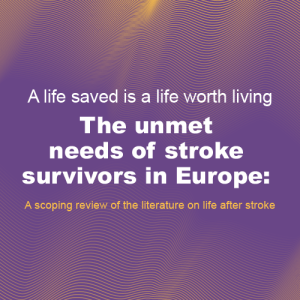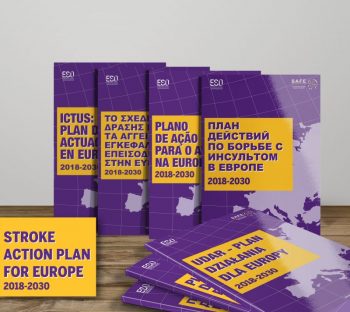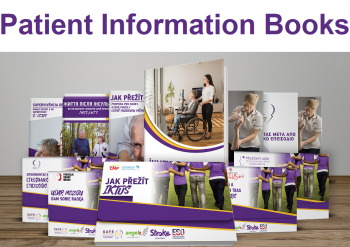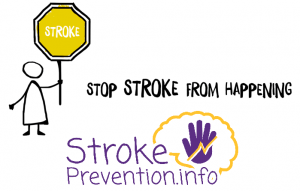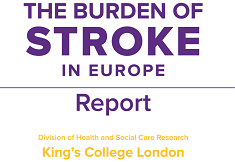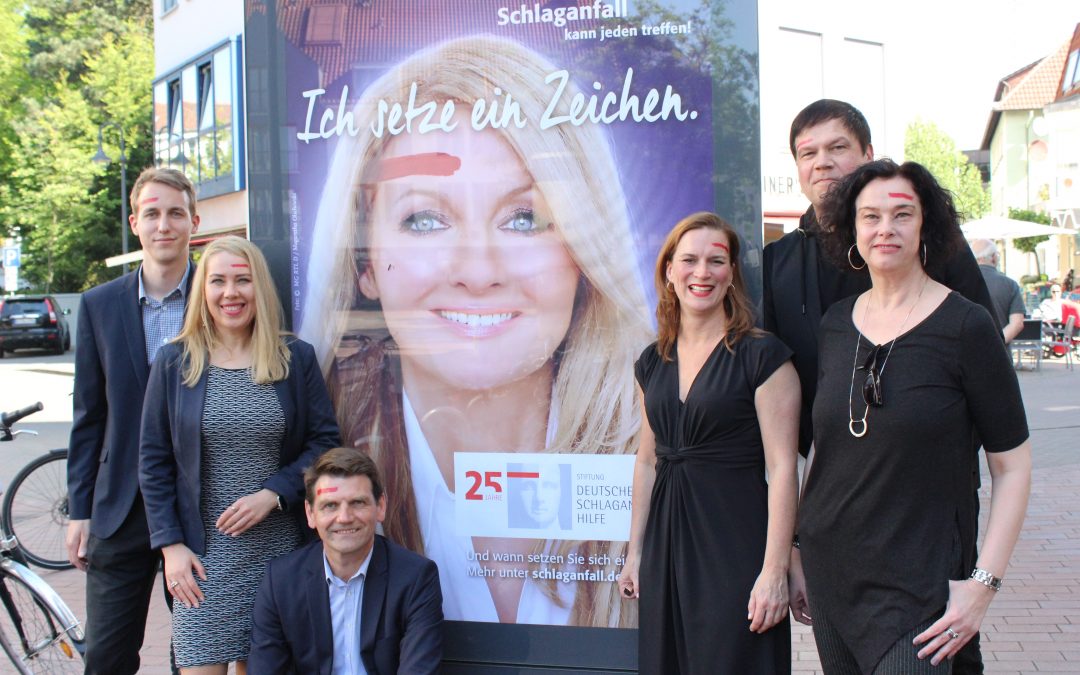
Mar 7, 2019
The German Stroke foundation started its work in January 1993. To celebrate the anniversary the foundation launched a new campaign: “I set a sign.” A newly designed website went online in October and the Integrated Care Project “STROKE OWL” enrolled the first patients.
Author: Ina Armbruster
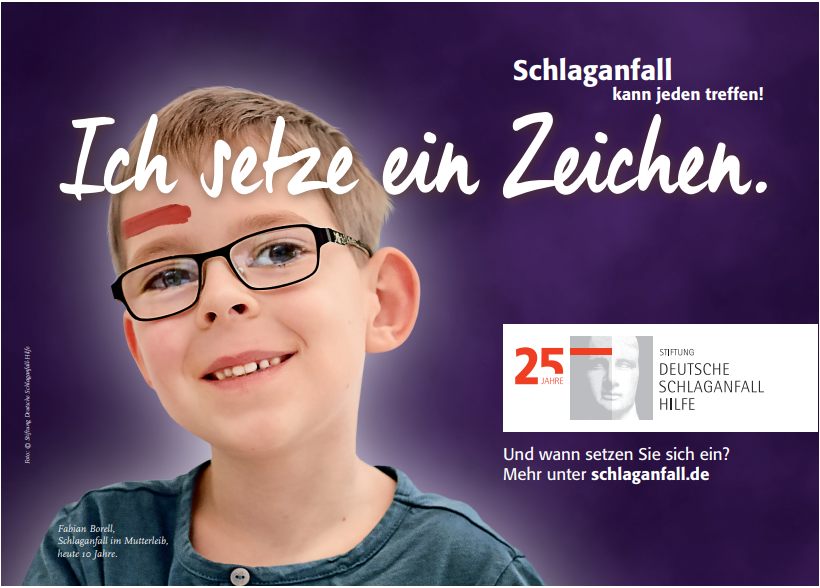 “I set a sign.”
“I set a sign.”
A red stripe above the eyebrow represents the stroke. A sign that celebrities, stroke victims and supporters set to raise awareness and show their solidarity towards stroke-victims. The campaign “I set a sign” was launched in May 2018 at the “Rosenball”, a significant charity event for the German Stroke Foundation in Berlin. During this event many guests had their picture taken with a red stripe above their eyebrow and uploaded their “sign” on social media or the campaign-page www.schlaganfall.de.
The campaign was running on many different channels. The local billboard company supported the foundation by offering rent-free billboards for a couple of weeks which were set up all over Gütersloh, the hometown of the foundation. Thanks to the cooperation with the TV channels of the RTL Group more than 100 million viewers have seen the TV-spot “I set a sign” so far. The advertisement has been published in many magazines with an edition of 1,5 million in total. People who have set a sign were portrayed with their individual stories on facebook once a week. Up to a couple of hundred users liked or commented on these posts.
The foundation used the campaign to raise awareness of stroke – because everyone can have a stroke, regardless of age, gender or social background.
New website
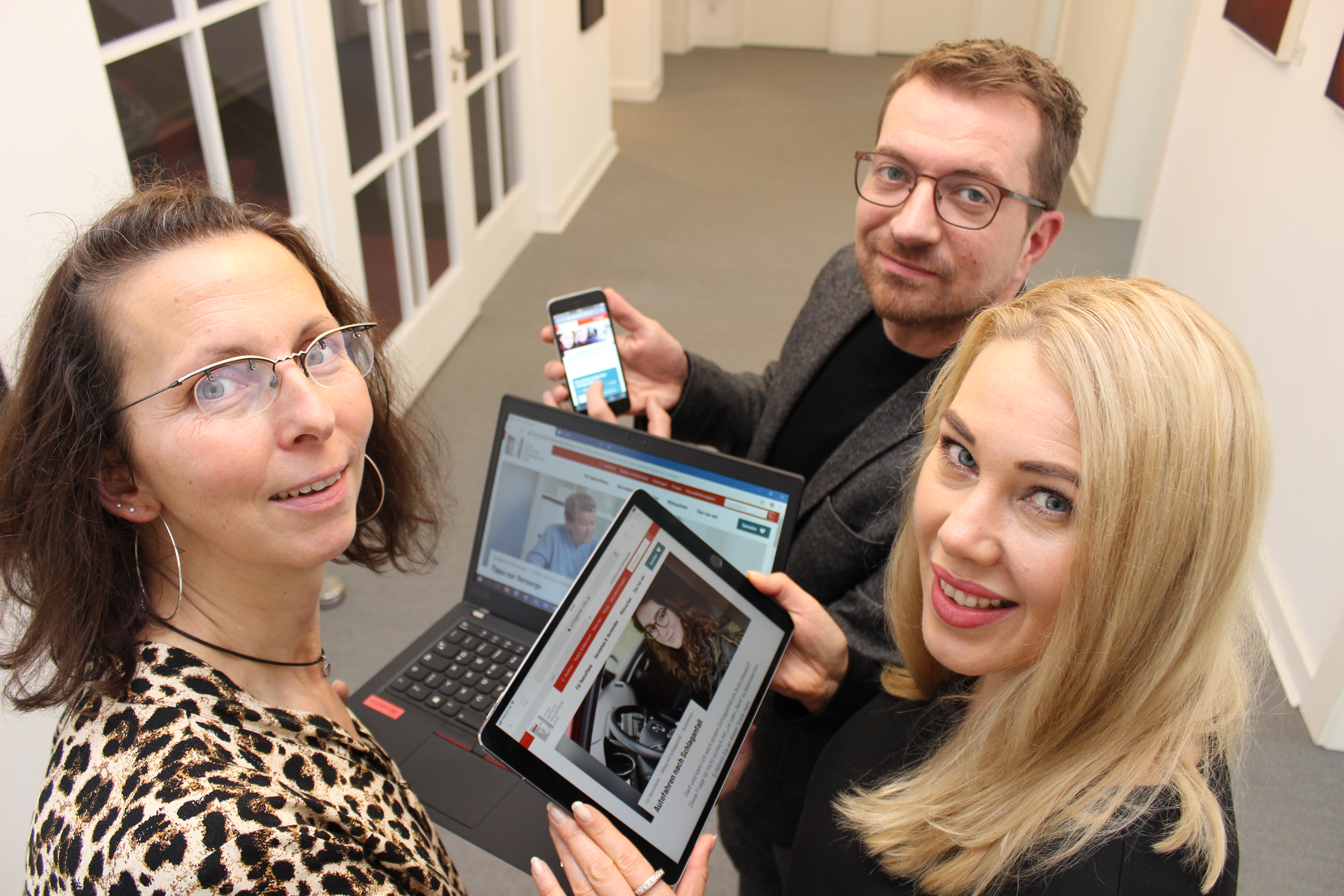 The German Stoke Foundation launched their new website at the end of October (World Stroke Day). Thanks to the modern design, the information presented on the new website is now easier to find for stroke-patients and their relatives as well as for experts and supporters.
The German Stoke Foundation launched their new website at the end of October (World Stroke Day). Thanks to the modern design, the information presented on the new website is now easier to find for stroke-patients and their relatives as well as for experts and supporters.
Additionally, the website is now accessible for mobile devices as well. In 2019 the website will be updated with more information. The foundation also plans to add further technical features. www.schlaganfall-hilfe.de
Project “STROKE OWL”
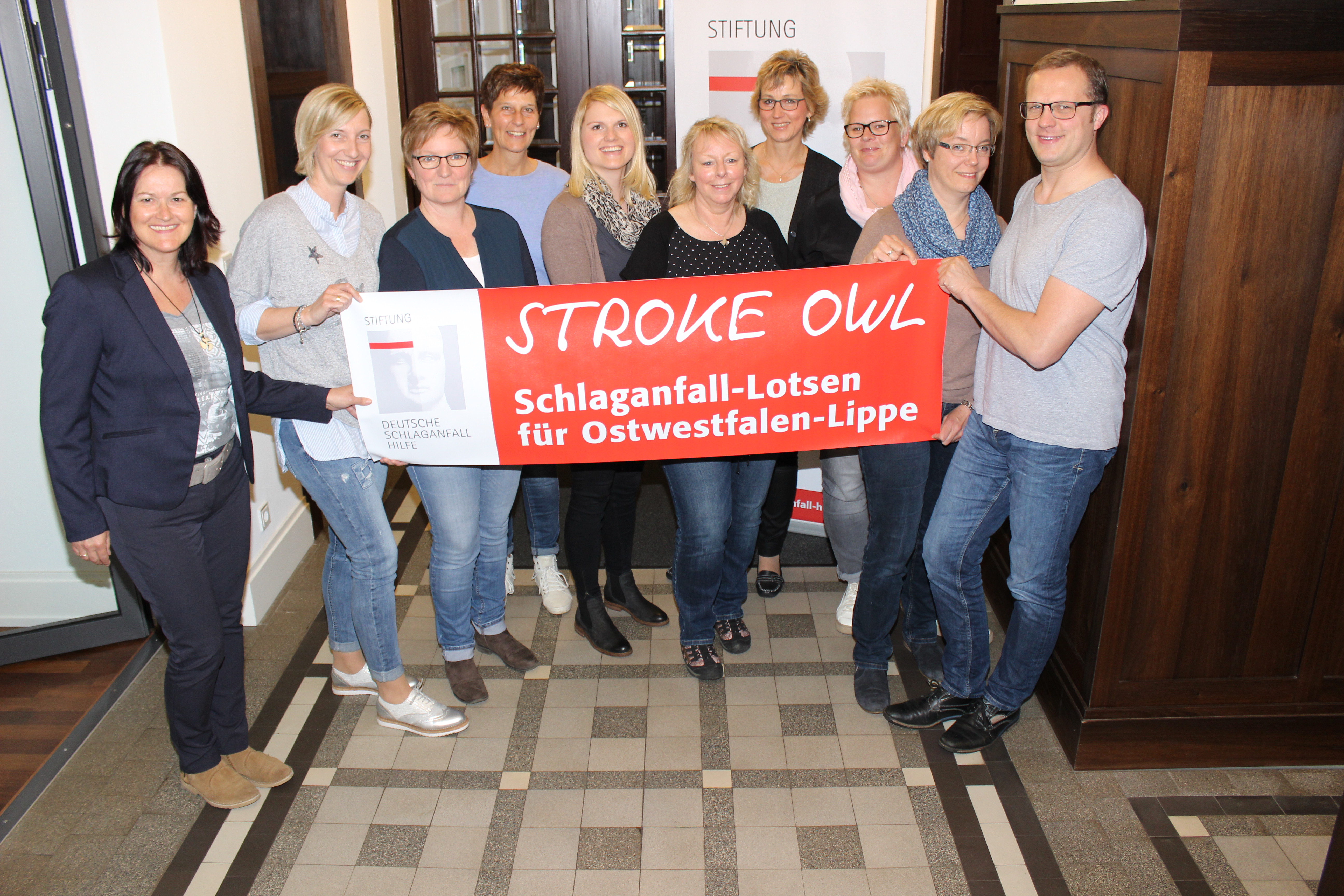 The project “STROKE OWL” started in 2017 and is financed by the German “innovation fund” with seven million euro. OWL stands for “Ostwestfalen-Lippe”, the region in Germany where the German Stroke Foundation is based. The foundation wants to prove that continuous case management is able to improve the situation of stroke-patients and reduce the risk of a second stroke.
The project “STROKE OWL” started in 2017 and is financed by the German “innovation fund” with seven million euro. OWL stands for “Ostwestfalen-Lippe”, the region in Germany where the German Stroke Foundation is based. The foundation wants to prove that continuous case management is able to improve the situation of stroke-patients and reduce the risk of a second stroke.
About the project:
- A specialised stroke case manager gets in touch with the patient at the stroke unit. The patient can take part in the program if he or she fulfils certain enrolement criteria. The case manager visits the patient during rehab and at home.
- All case managers have experience with stroke patients. Most of them are nurses or therapists with further education in case management.
- The case manager informs patients and their families about everything they need to know after having a stroke and gives them advise and support. The manager organises the treatment, helps filling out applications, and looks after the patient in general.
- The manager supports the patient for one year. The foundation´s goal is to enrol 2000 patients in the program.
By proving the advantages of a case management not only for the patients but also for the health care system in general the German Stroke foundation wants to support the establishment of stroke case management, which in the end is payed by the insurance companies.
Looking forward to 2019
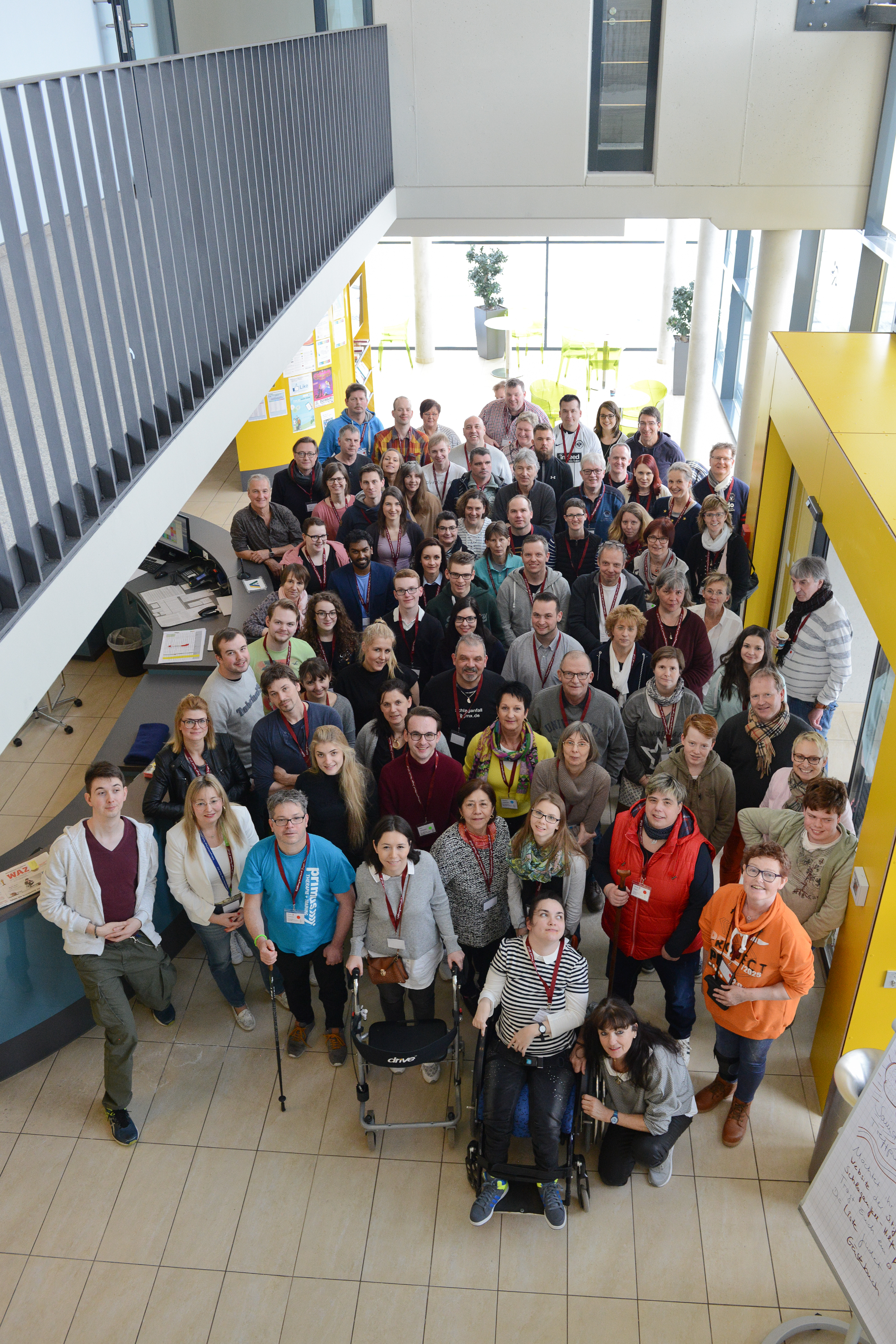 The German Stroke foundation is looking forward to 2019. Some of the events and projects the team is planning:
The German Stroke foundation is looking forward to 2019. Some of the events and projects the team is planning:
– seminar for parents of children who had a stroke
– implementing a second case manager in Germany for children who had a stroke and their families
– continuing the project “STROKE OWL”
– raising attention to the topic with a campaign for the “Day against stroke” in May (with a focus on “The invisible consequences of stroke”, e.g. concentration-problems, emotional imbalance or neglect)
– 4-day workshop for young stroke patients between 18 and 50
and much more…
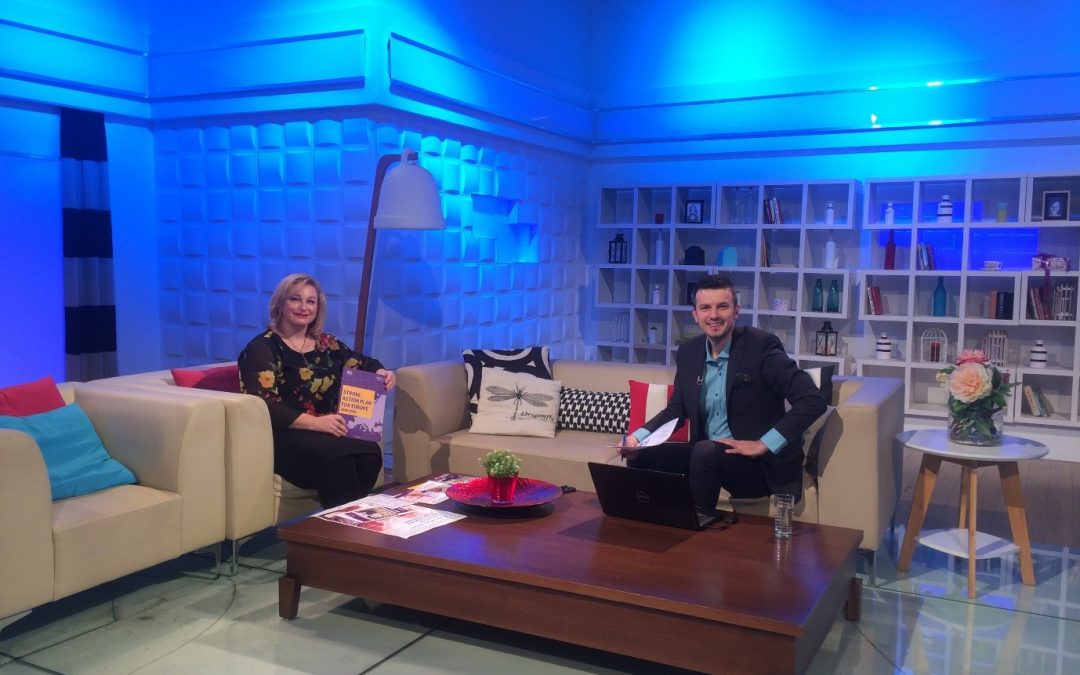
Jan 15, 2019
Written by Anita Arsovska and Maja Bozhinovska
On the occasion of the World Stroke Day, 29th October 2018, the Macedonian organization for a fight against stroke, Macedonian Neurology Society, Society of nurses in Neurology and the Red Cross have traditionally organized many activities on several locations.
We carried out public activities in Skopje, Shtip, Tetovo and Strumica that aimed to increase the general knowledge of the population of stroke, i.e. how to promptly recognize signs and symptoms of this disease and which measures should be taken for stroke prevention.
On the 28th October, Elena Lichkova in Shtip, Danijela Samoilovska Vojtikiv in Tetovo, Biljana Ivanova in Strumica, Anita Arsovska and Gordana DImeska in Skopje organized these activities, during which, free measurement of blood pressure and blood sugar was performed, printed material on stroke facts was distributed and prevention advise were given.
As usual, these activities were coordinated with the World Stroke Campaign organized by the World Stroke Organization. Our campaign was successful owing to the great help of our nurses, Neurology residents and young specialists who volunteered and helped to realize our goals during the World Stroke Day 2018. All participants wore T-shirts with the sign BRZO (FAST) with logos of all organizations that are involved in the World Stroke Day. We also translated posters, banners and leaflets provided by the World Stroke Campaign and distributed them during the activities.
We determined the vascular risk factors in over 500 people and they were advised how to protect themselves from stroke. These activities were posted on the website of the society and on Facebook.
The activities continued on the 29th October 2018, when Gordana Dimeska and the Society of Nurses in Neurology organized a scientific meeting with several lectures for nurses on the subject of stroke, contemporary diagnostic and therapeutical approach as well as stroke risk factors.
On the 12th November 2018, in the Holiday Inn Hotel in Skopje, Anita Arsovska and the Macedonian Neurology Society organized a scientific meeting on the subject World Stroke Day. Invited speakers were Ivan Barbov, MD, PhD (University Clinic of Neurology), Ass. Prof. Hristo Pejkov (University Clinic of Cardiology), Prof. Dr. Anita Arsovska (University Clinic of Neurology) and Dr. Menka Lazareska (University Institute of Radiology). The scientific meeting was supported by the pharmaceutical company Bayer and was opened by Ivan Barbov, MD, PhD, who pointed out the significance of the contemporary multidisciplinary approach in the diagnosis and treatment of patients with stroke, that aims to contribute to better functional outcome of the patients, but also to decrease the burden of this disease in our society.
Than, Ass. Prof. Hristo Pejkov talked on the subject of Atrial Fibrilation, its significance as one of the most frequent stroke risk factors, how it is diagnosed and treated, with the application of direct (new) oral anticoagulants.
Prof. Dr. Anita Arsovska delivered a lecture on Embolic Stroke of Undetermined Source, where she described the necessary diagnostic criteria and the latest studies results regarding the treatment of this specific type of stroke. Prof. Arsovska than continued with the contemporary therapeutical approach of ischemic stroke. She talked about the therapy in the acute phase and the newest guidelines regarding the recommendations for secondary stroke prevention, especially the application of anticoagulation therapy in patients with stroke and atrial fibrillation.
Dr. Menka Lazareska gave a talk on Application of mechanical thrombectomy in patients with ischemic stroke, contemporary guidelines, devices and techniques of performance that enable fast diagnosis and treatment of acute ischemic stroke patients.
This scientific meeting was attended by more that 100 participants who showed great interest in all lectures and at the end they agreed that this multidisciplinary approach is necessary for faster, more effective and more successful treatment of the patients with stroke.
All these activities were covered by the media, and Prof. Anita Arsovska went on several TVs where she promoted these events, and she also talked about stroke risk factors, signs and symptoms, answering questions from the audience.
We plan to continue with our activities this year as well, we intend to support European and World Stroke Day, Angels Initiative; to promote SOFT and Stroke Action Plan for Europe 2018-2030.
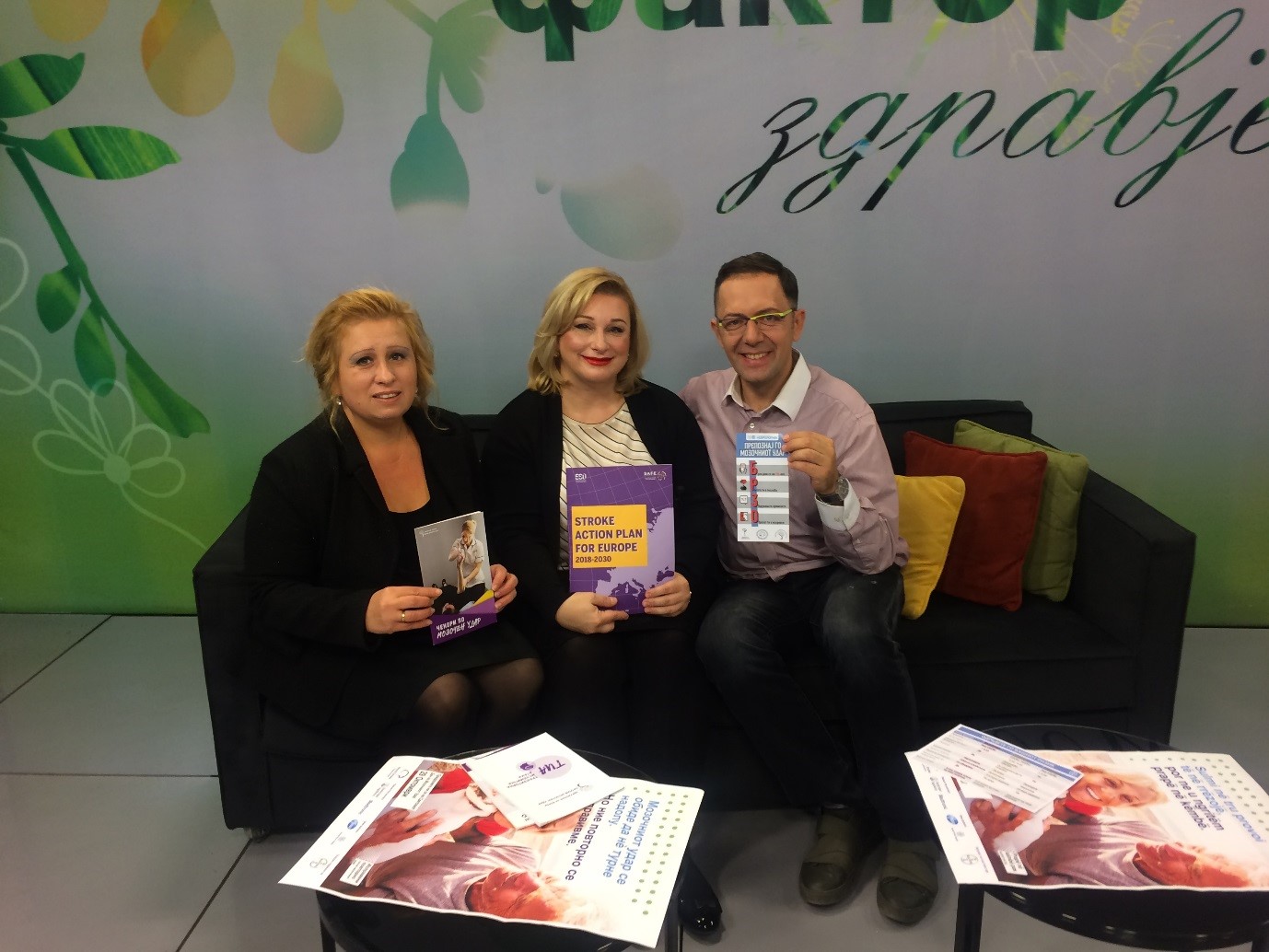
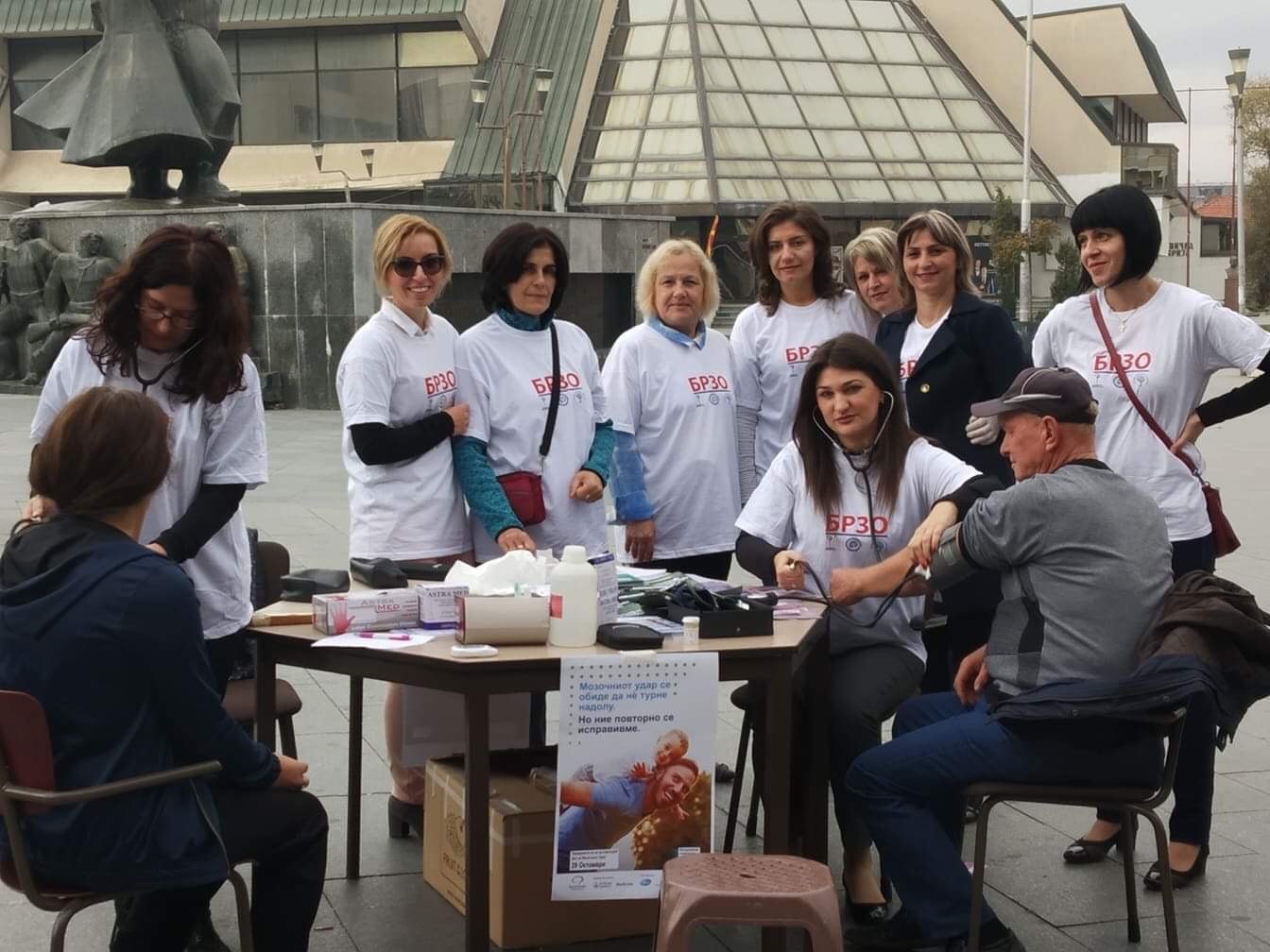
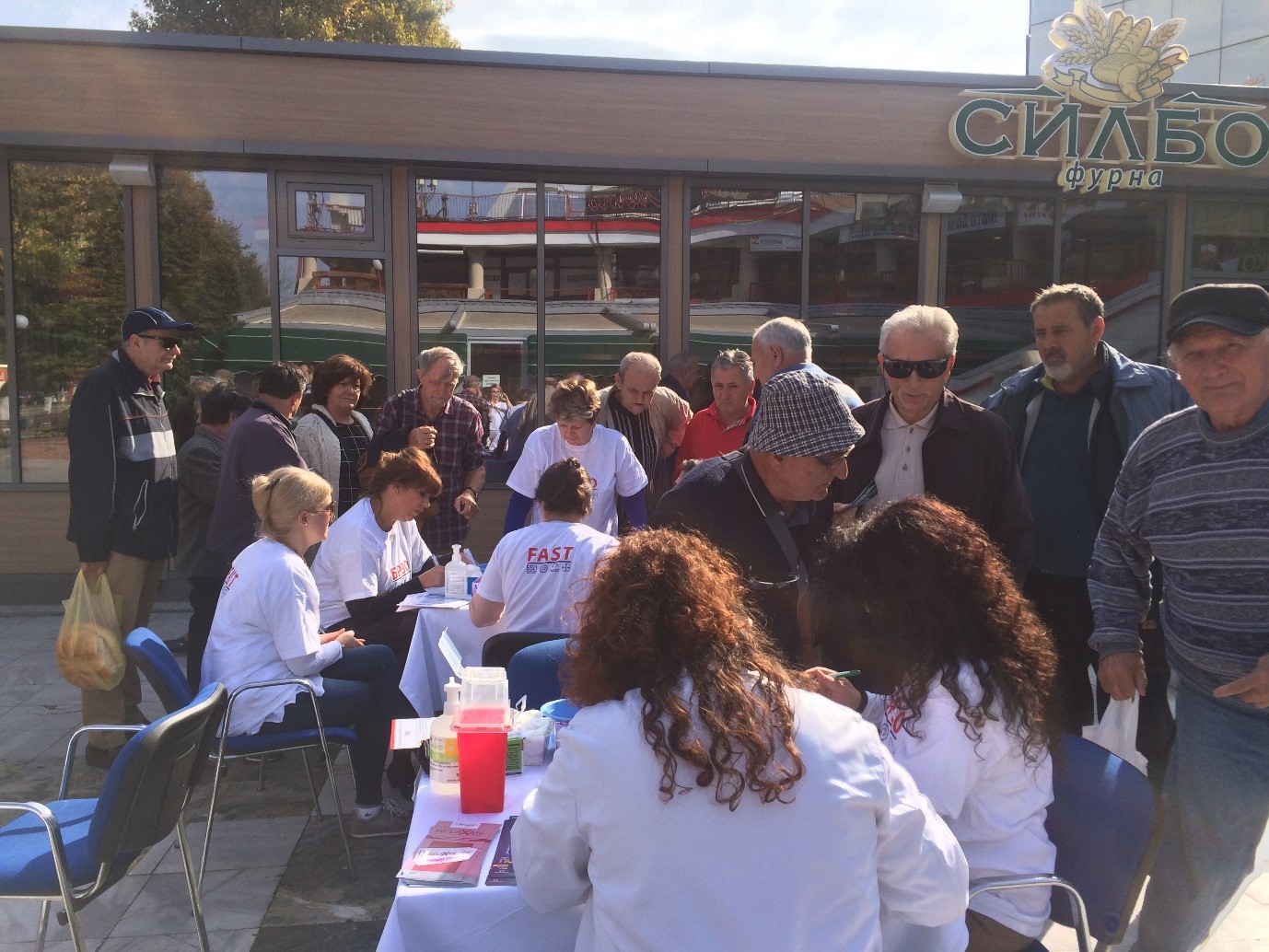
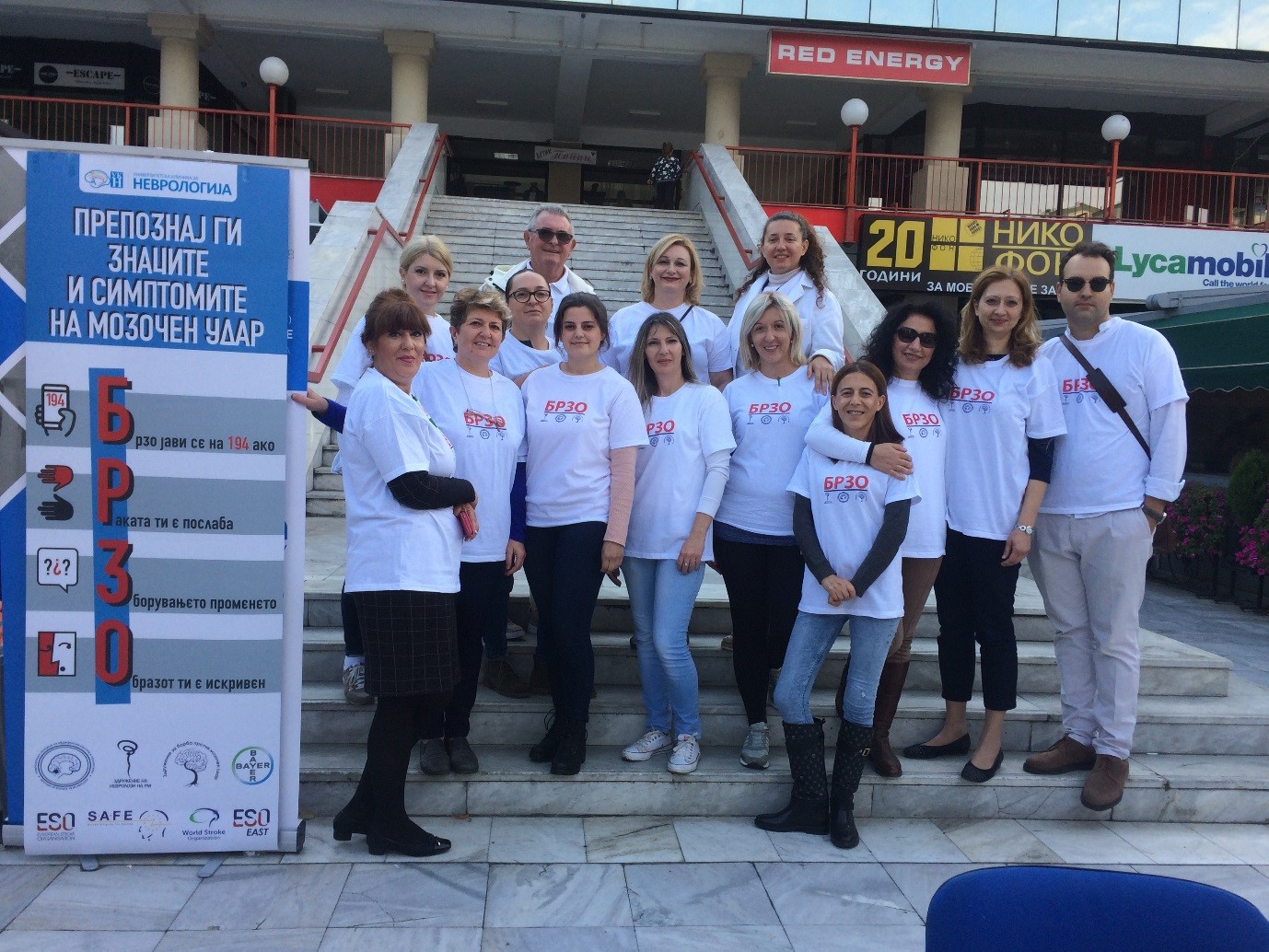
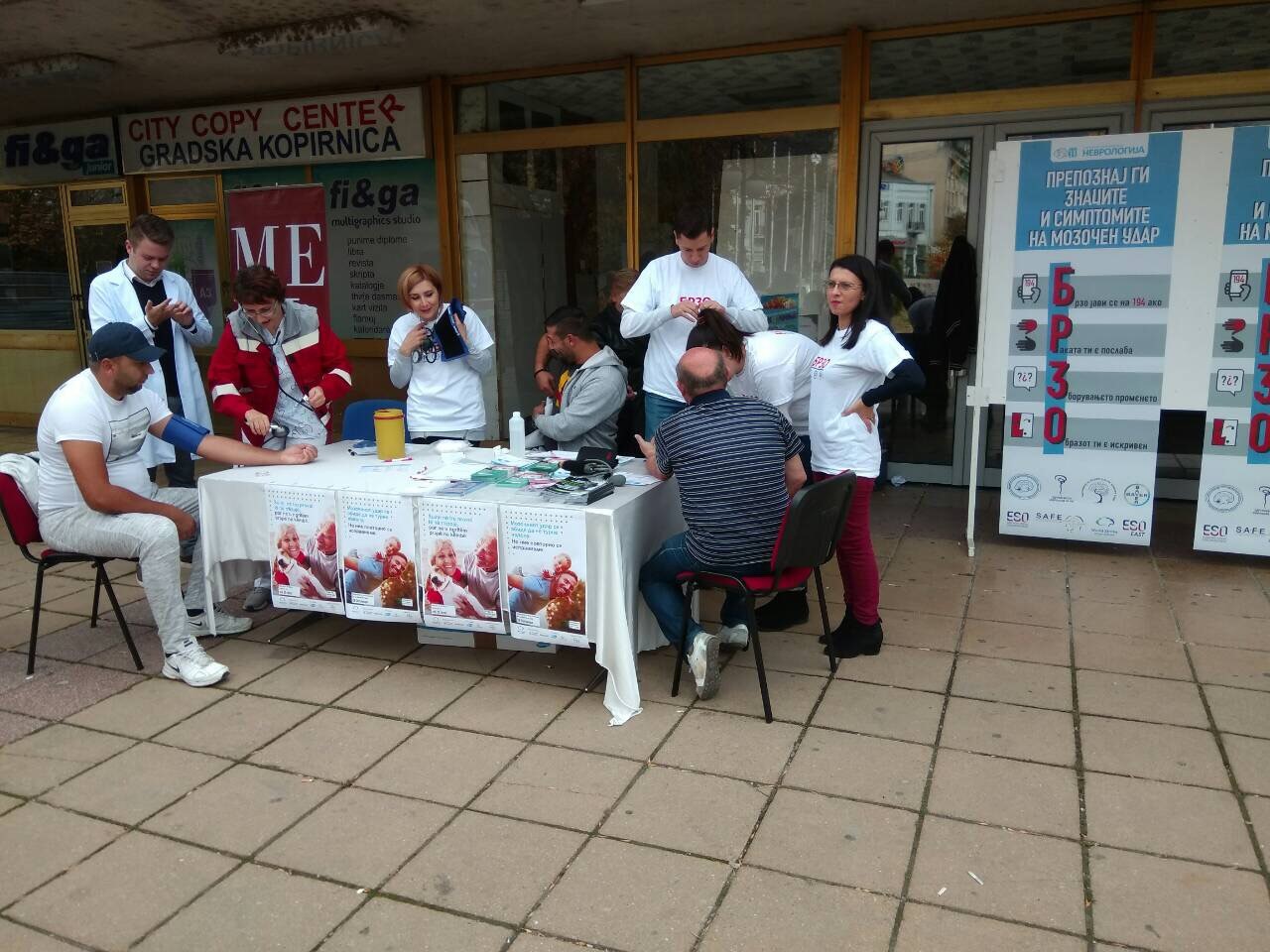
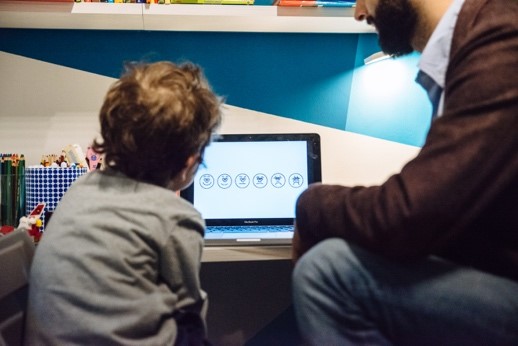
Jan 11, 2019
Article written by Francesca Fedeli, Founder of Fightthestroke.org, advocating for young stroke and CP survivors
Fightthestroke has been selected among 65 practices and 11 policies from around the world that help persons with disabilities on the Zero Project Award 2019, celebrating this year the topic of Independent Living and Political Participation. Project Mirrorable indeed has been awarded as a unique platform that improves the Motor Function in Young People with Cerebral Palsy.
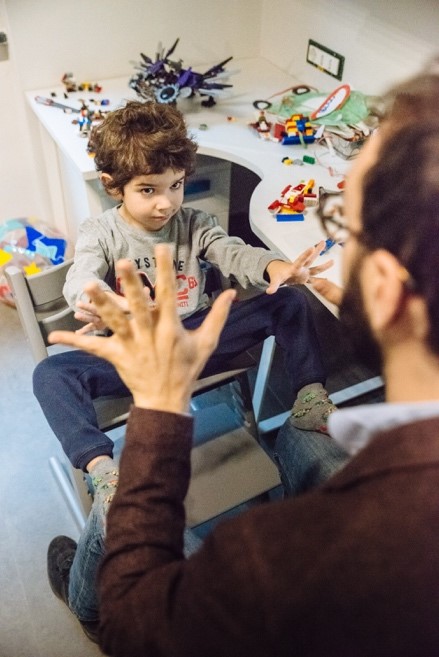 Fightthestroke, an Italian social enterprise founded in 2014, has developed an online platform called ‘Mirrorable’ to support rehabilitation of young stroke survivors. Mirrorable is a home-based therapy programme based on Action Observation Treatment, which states that by observing and imitating the actions of others we trigger specific neurons (‘mirror neurons’) in our own brain. Young stroke survivors are paired through AI and via a video platform and undertake tasks together to improve motor skills. A clinical trial on children with unilateral cerebral palsy has demonstrated an improvement in hand motor function compared to traditional rehabilitation, along with high levels of adherence and engagement.
Fightthestroke, an Italian social enterprise founded in 2014, has developed an online platform called ‘Mirrorable’ to support rehabilitation of young stroke survivors. Mirrorable is a home-based therapy programme based on Action Observation Treatment, which states that by observing and imitating the actions of others we trigger specific neurons (‘mirror neurons’) in our own brain. Young stroke survivors are paired through AI and via a video platform and undertake tasks together to improve motor skills. A clinical trial on children with unilateral cerebral palsy has demonstrated an improvement in hand motor function compared to traditional rehabilitation, along with high levels of adherence and engagement.
“MaVi discovered herself for the first time, when practicing with Mirrorable in front of the TV screen. The project for me was “moving”, it touches the heart and, if there is a mirror heart, it touches it too!”
– Valentina, mother of MaVi, who took part in the Mirrorable pilot
Problems Targeted
There are few effective and accessible evidence-based solutions to help rehabilitate motor skills in the estimated 17 million children with cerebral palsy worldwide.
Solution, Innovation, and Impact
The Mirrorable platform uses the scenario of learning to become a magician to encourage young stroke survivors to practice motor skills every day for a month. Children in the Mirrorable’s clinical trial received a toolkit with a computer, a 3D camera, and selection of booklets and magic tricks. They used these to imitate the magician in videos on a cloud-based platform. They were also matched with peers via video link to practice together and learn from each other. The IT-platform uses an algorithm to ensure the best possible match in terms of motor skills, cognitive abilities, etc. to support reciprocal teaching and rehabilitation. The gaming approach of Mirrorable increases the appeal for children and encourages them to practice. In the market version, the 3D camera has been replaced by artificial intelligence technology which tracks and records the child’s movements and emotions so that progress can be measured by the child, family members, and health professionals. Results of a clinical trial, presented in 2018, showed a 26 per cent improvement in motor function, increased family engagement, and 100 per cent adherence to the daily exercises.
Funding, Outlook, and Transferability
Support developing Mirrorable and the clinical trial came from corporate fundraising, grants and private donors, but the project was especially driven by the Fightthestroke co-founders Francesca Fedeli and Roberto D’Angelo who experienced themselves a young stroke survivor in their family. Following the trial Mirrorable is now developing a business model to bring the product to a wider market, while keeping prices as low as possible for families of young stroke survivors.
Mirrorable’s cloud-based technology makes easily transferable, and the operating system is already available in Italian, Spanish and English. Fightthestroke is exploring whether the programme might be appropriate for other target groups, such as adult stroke survivors or people with Parkinson’s disease. Fightthestroke has also developed an offline programme to complement Mirrorable’s online platform, and held its first intensive Mirrorable sports camp, including Habit and AOT treatments, for children with unilateral cerebral palsy in August 2018.
About the Practice at a Glance
NAME OF INNOVATIVE PRACTICE: Mirrorable
ORGANIZATION: Fightthestroke
COUNTRY OF IMPLEMENTATION: Italy
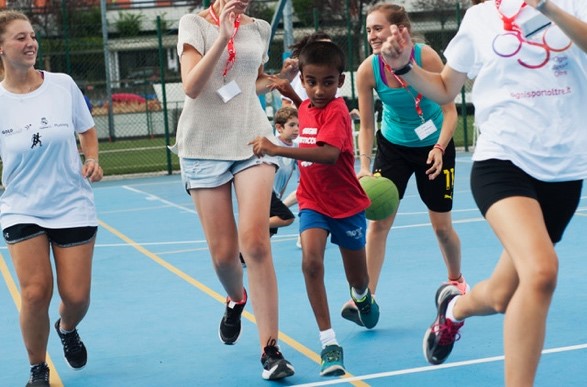 Facts and Figures
Facts and Figures
– A recent clinical trial demonstrated that Mirrorable online users realized a 26 per cent improvement in motor function.
– The Mirrorable model costs approximately half as much as conventional therapy.
– The Mirrorable ecosystem can be easily replicable for other target groups, as adults who suffered a brain stroke.
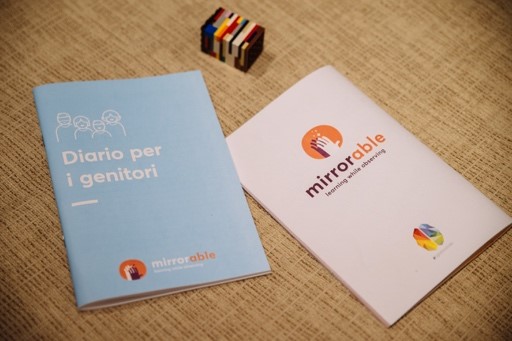 Contact
Contact
Francesca Fedeli
francesca@fightthestroke.org
Fightthestroke Website
Links and Further Reading:
Mirrorable website
Mirrorable founders’ Ted Talk (video)
Mirrorable demo video
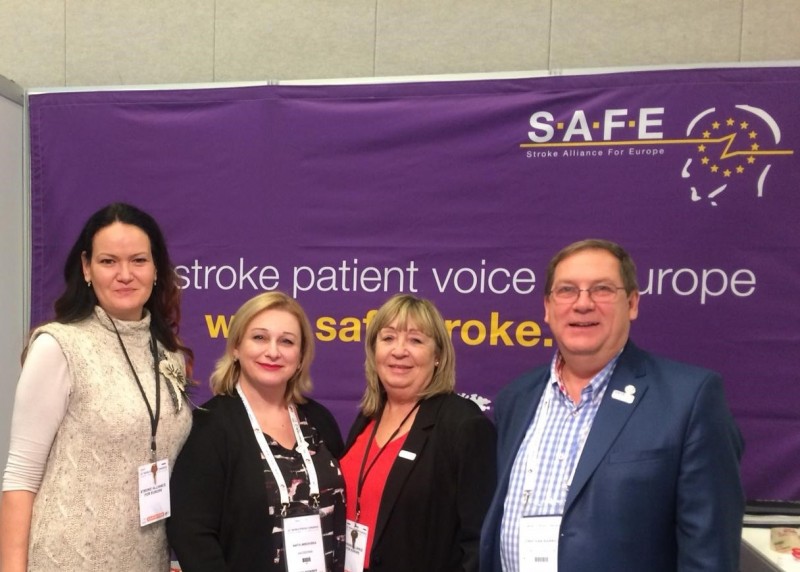
Oct 21, 2018
At this year’s World Stroke Congress In Montreal, Canada, SAFE was present through a variety of activities, from chairing stroke support sessions, being one of the key speakers and presenters, having a very well noticed and visited information stand, to actively participating in the World Stroke Day workshop and shaping the World Stroke Campaign in the years to come.
SAFE President Jon Barrick presented the SSOFT project, an online ‘how to’ toolkit for a range of advocating skills training, from setting up a stroke support organisation to leading PR and advocacy campaigns. This tool aims to build capacity of the European SSOs but can be used much broader to increase one world voice for stroke. His presentation sparked interest even among SSOs from other continents leading to an interesting exchange of ideas and suggestions for its further development. The SSOFT project will be completed by end of November 2018. Project team are looking at the future development such as translation into other languages, additional modules, global scope, said Barrick, but it is depending on funding. The presentation was broadcasted live on Facebook and the video can be found here.
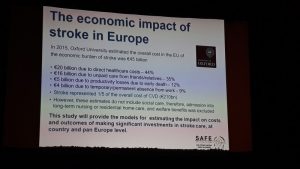
In addition to the SSOFT project, SAFE had a chance to present the economic Burden of Stroke Report, scheduled to be published towards the end of 2019, as well as the SAFE & Industry Partner collaboration project on Life With Spasticity.
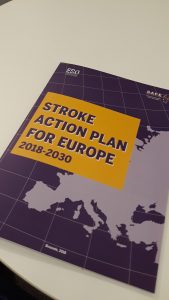 However, the Stroke Action Plan for Europe 2018-2030, a joint SAFE and ESO project got the majority of attention due to the fact that it just has been launched in May this year and is aimed to set the road map for stroke prevention, treatment and life after stroke in Europe in the next 12 years.
However, the Stroke Action Plan for Europe 2018-2030, a joint SAFE and ESO project got the majority of attention due to the fact that it just has been launched in May this year and is aimed to set the road map for stroke prevention, treatment and life after stroke in Europe in the next 12 years.
Successful examples and case studies from around the world, such as the one of the Swedish Stroke Registry and their latest project about caregivers and how they are coping with the consequences of strokes in their loved ones. The need for comprehensive and systematic follow up reviews for stroke survivors, after 3, 6 and 12 months was particularly stressed out.
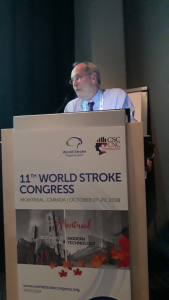
Prof. Bo Norrving
We heard from Prof. Bo Norrving, University of Lund, Sweden, that one of 6 strokes was eradicated in Sweden over the last 6 years, meaning 14,000 in absolute number of strokes, and saving one billion euros. The reason for this success lays in treatment of TIA, atrial fibrillation and use of preventive medications. Stroke is probably the single most preventable disease of all. It may be that I am wrong, but I would like to be proven to be wrong, said Prof. Norrving.
During a separate open session on stroke as part of the non-communicable disease, Stephanie Mohl on behalf of American Heart and Stroke Association opened the conversation saying: Here we are in 2018 and we still need to talk about why patients need to in center of the healthcare, pointing towards all of the necessary efforts to convince the policy decision makers to listen to the patient voice in almost all parts of the world.
The way non-communicable diseases were addressed so far by the policy makers, the NCD acronym might as well stand for No Can Do, said Jon Barrick. This needs to be changed, but we need to be aware that people don’t put energy into hopeless campaigns, so stroke support organisations should be more active in showing perspectives and opportunities for stroke survivors and their carers.
SAFE was active on social media during the whole three days of the World Stroke Congress. For more information, please visit our social media accounts on Facebook and Twitter.
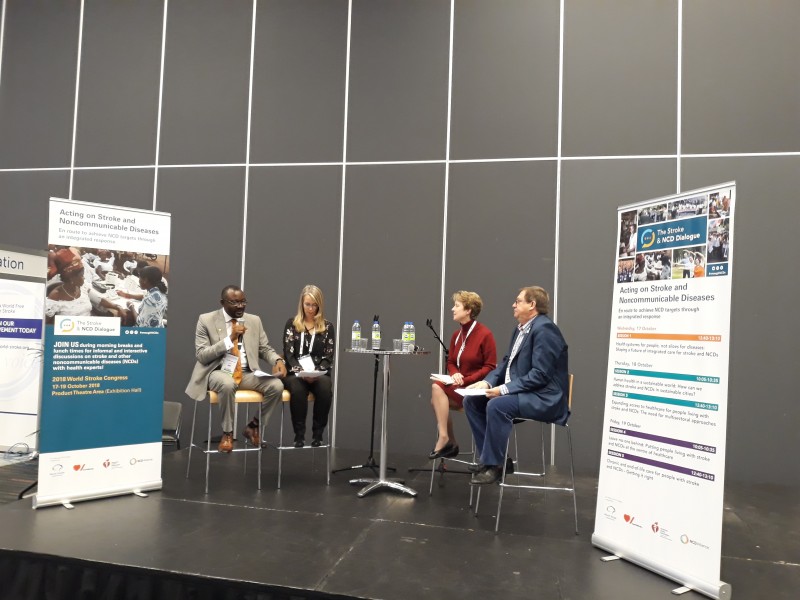
An open session on stroke and non-communicable diseases
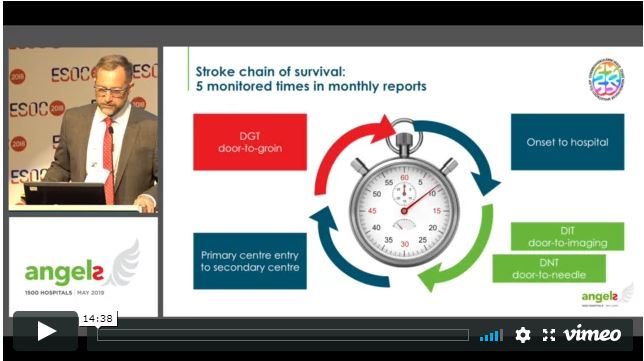
Jun 20, 2018
First appeared on oruen.com
Every 30 minutes a stroke patient who could have been saved, dies or is permanently disabled, because they were treated in the wrong hospital.
Angels Initiative is building a global community of stroke centers and stroke-ready hospitals, working every day to improve the quality of treatment for every stroke patient.
The goal is to get 1500 stroke-ready hospitals around the world by May 2019.
Please click on the photo bellow to access the series of the Angels ESOC 2018 symposium videos:
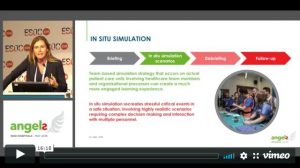
For more information about Angels Initiative, please visit www.angels-initiative.com
Page 6 of 10« First«...45678...»Last »

 “I set a sign.”
“I set a sign.” The German Stoke Foundation launched their new website at the end of October (World Stroke Day). Thanks to the modern design, the information presented on the new website is now easier to find for stroke-patients and their relatives as well as for experts and supporters.
The German Stoke Foundation launched their new website at the end of October (World Stroke Day). Thanks to the modern design, the information presented on the new website is now easier to find for stroke-patients and their relatives as well as for experts and supporters. The project “STROKE OWL” started in 2017 and is financed by the German “innovation fund” with seven million euro. OWL stands for “Ostwestfalen-Lippe”, the region in Germany where the German Stroke Foundation is based. The foundation wants to prove that continuous case management is able to improve the situation of stroke-patients and reduce the risk of a second stroke.
The project “STROKE OWL” started in 2017 and is financed by the German “innovation fund” with seven million euro. OWL stands for “Ostwestfalen-Lippe”, the region in Germany where the German Stroke Foundation is based. The foundation wants to prove that continuous case management is able to improve the situation of stroke-patients and reduce the risk of a second stroke. The German Stroke foundation is looking forward to 2019. Some of the events and projects the team is planning:
The German Stroke foundation is looking forward to 2019. Some of the events and projects the team is planning:







 Fightthestroke, an Italian social enterprise founded in 2014, has developed an online platform called ‘Mirrorable’ to support rehabilitation of young stroke survivors. Mirrorable is a home-based therapy programme based on Action Observation Treatment, which states that by observing and imitating the actions of others we trigger specific neurons (‘mirror neurons’) in our own brain. Young stroke survivors are paired through AI and via a video platform and undertake tasks together to improve motor skills. A clinical trial on children with unilateral cerebral palsy has demonstrated an improvement in hand motor function compared to traditional rehabilitation, along with high levels of adherence and engagement.
Fightthestroke, an Italian social enterprise founded in 2014, has developed an online platform called ‘Mirrorable’ to support rehabilitation of young stroke survivors. Mirrorable is a home-based therapy programme based on Action Observation Treatment, which states that by observing and imitating the actions of others we trigger specific neurons (‘mirror neurons’) in our own brain. Young stroke survivors are paired through AI and via a video platform and undertake tasks together to improve motor skills. A clinical trial on children with unilateral cerebral palsy has demonstrated an improvement in hand motor function compared to traditional rehabilitation, along with high levels of adherence and engagement. Facts and Figures
Facts and Figures Contact
Contact

 However, the Stroke Action Plan for Europe 2018-2030, a joint SAFE and ESO project got the majority of attention due to the fact that it just has been launched in May this year and is aimed to set the road map for stroke prevention, treatment and life after stroke in Europe in the next 12 years.
However, the Stroke Action Plan for Europe 2018-2030, a joint SAFE and ESO project got the majority of attention due to the fact that it just has been launched in May this year and is aimed to set the road map for stroke prevention, treatment and life after stroke in Europe in the next 12 years.



